Abstract
Infections caused by streptococci pathogenic for man are some of the most common bacterial diseases in temperate zones and occur very frequently in tropical and subtropical countries. The highest morbidity occurs from infections caused by group A streptococci; these infections can lead to rheumatic fever and acute glomerulonephritis. The incidence of rheumatic fever and the prevalence of rheumatic heart disease are several times higher in tropical countries than temperate countries.
Recent developments in fundamental and applied research are throwing light on various aspects of the problem, e.g., the rapid (non-culture) identification of group A streptococcal infection. Analyses of the chemical structure of the M-protein molecule of group A streptococcus and of the biological properties of the epitopes of the M-protein have provided encouraging results. Furthermore, synthetic analogues of the protective immunodominant polypeptides of the M-protein have been prepared. The prospect of a streptococcal vaccine for preventing group A streptococcal diseases is thus more realistic.
The control of infections caused by group B streptococci is important for the health of neonates. The identification of the chemical structure of the major group B streptococcal types may lead to development of a vaccine in the future. An alternative approach would entail the use of anti-group-B immunoglobulins, but a number of questions have to be answered before the new control measures can be introduced. The streptococci causing bacterial pneumonia, subacute bacterial endocarditis and possibly dental caries have been widely studied and promising advances have been made towards the introduction of better control of the diseases caused by these pathogens.
Full text
PDF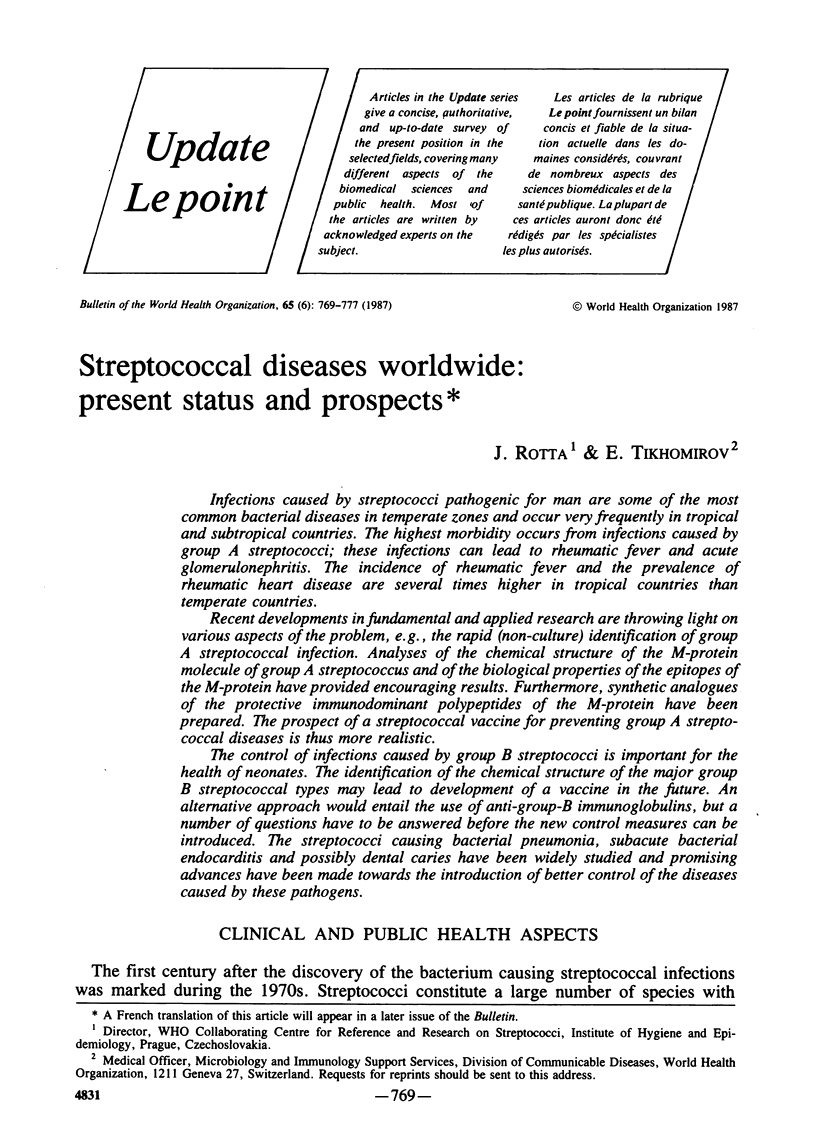

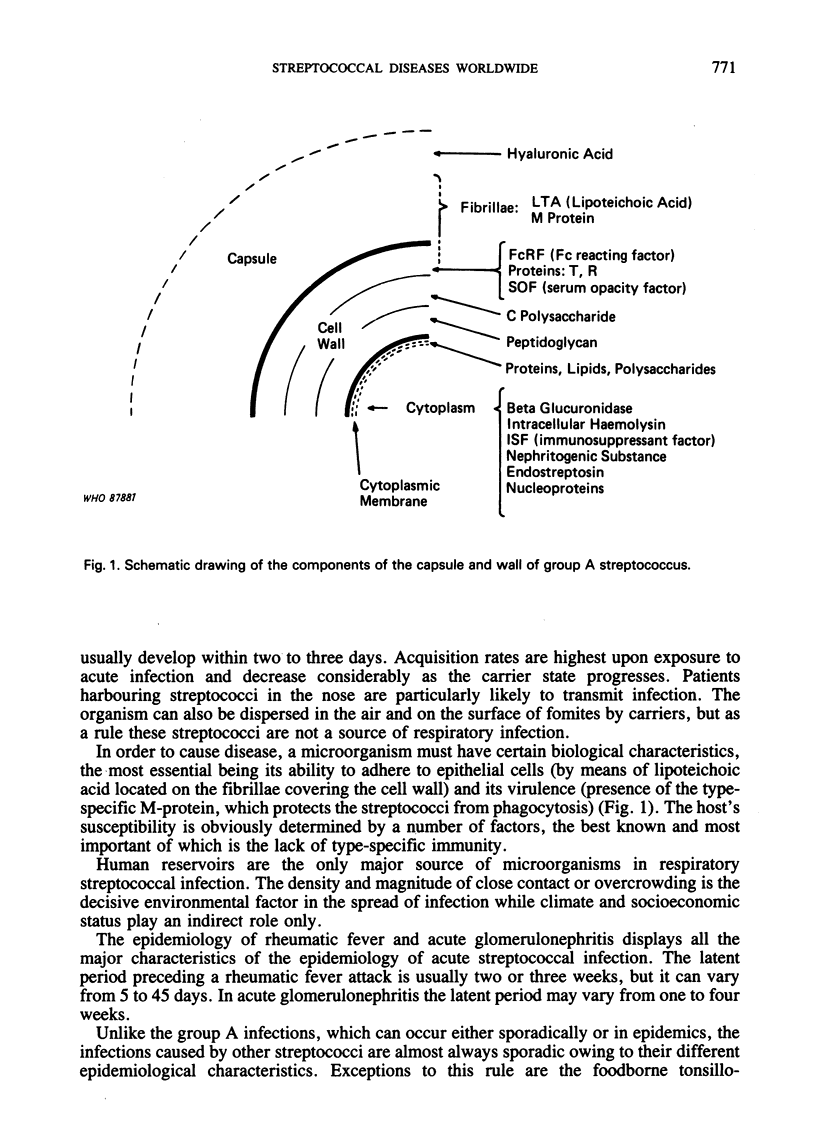
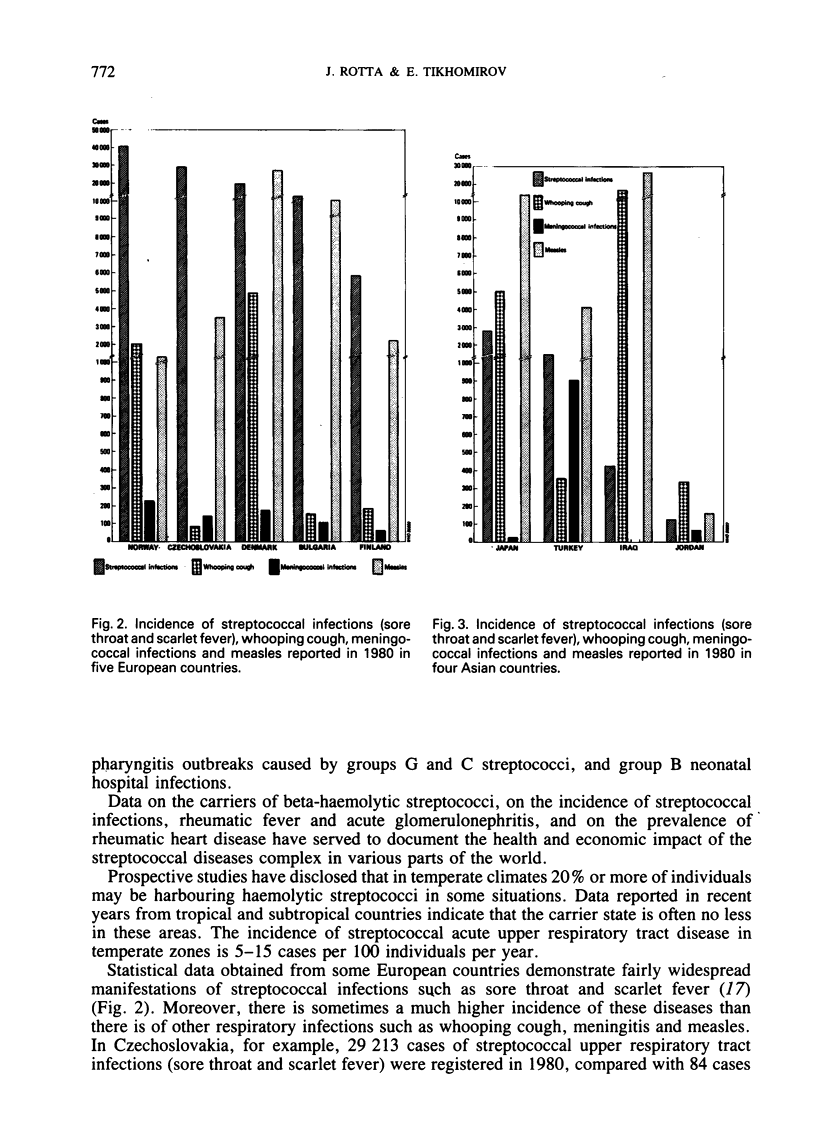

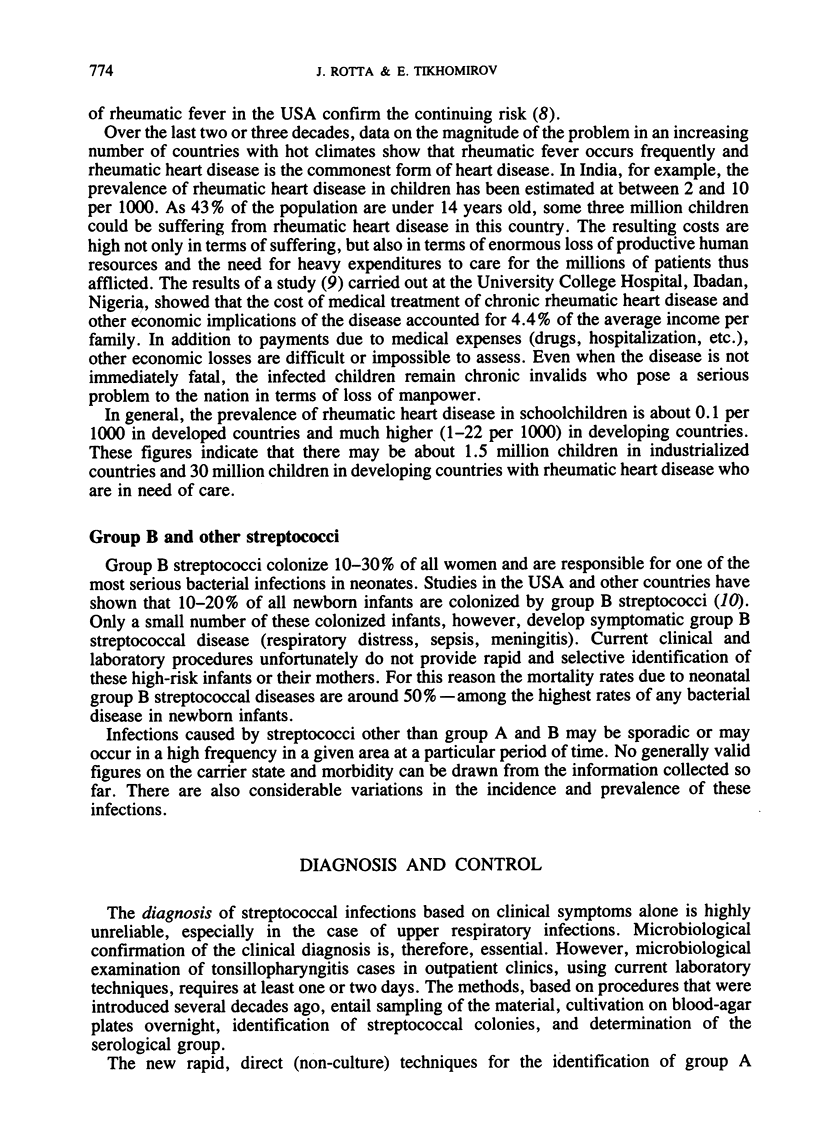

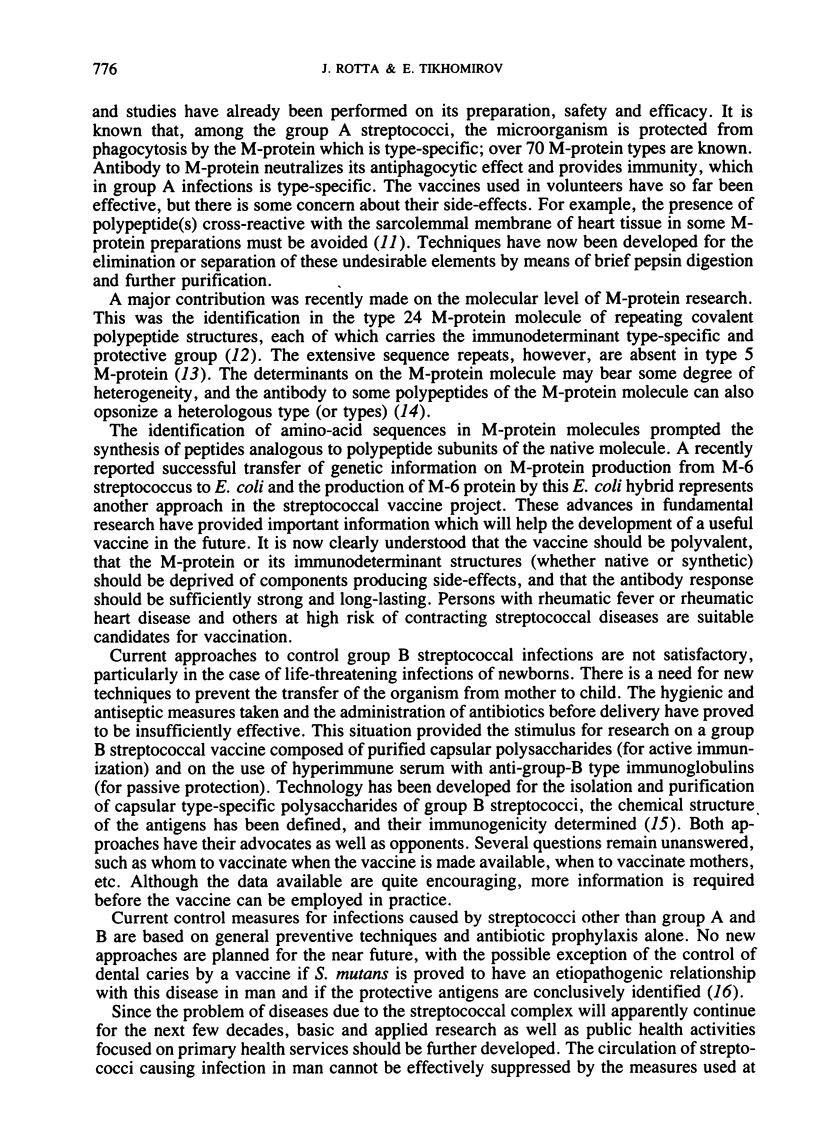
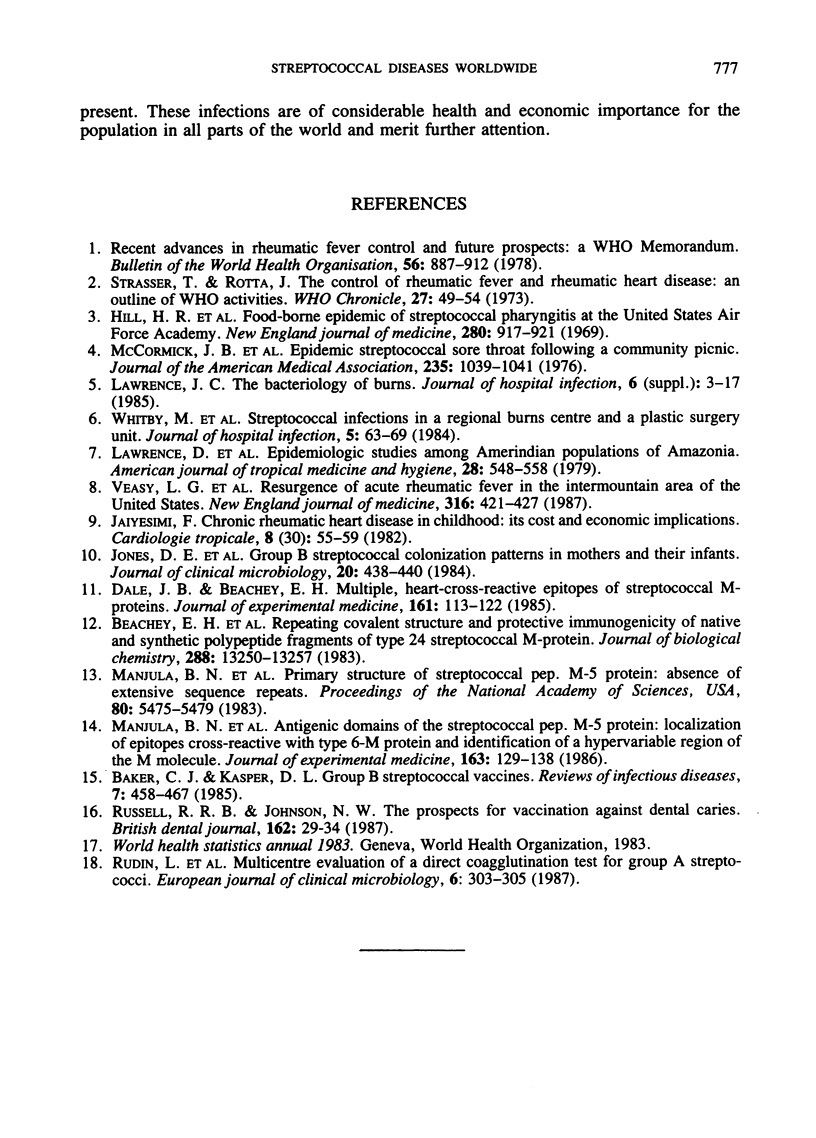
Selected References
These references are in PubMed. This may not be the complete list of references from this article.
- Baker C. J., Kasper D. L. Group B streptococcal vaccines. Rev Infect Dis. 1985 Jul-Aug;7(4):458–467. doi: 10.1093/clinids/7.4.458. [DOI] [PubMed] [Google Scholar]
- Dale J. B., Beachey E. H. Multiple, heart-cross-reactive epitopes of streptococcal M proteins. J Exp Med. 1985 Jan 1;161(1):113–122. doi: 10.1084/jem.161.1.113. [DOI] [PMC free article] [PubMed] [Google Scholar]
- Hill H. R., Zimmerman R. A., Reid G. V., Wilson E., Kilton R. M. Food-borne epidemic of streptoccal pharyngitis at the United States Air Force Academy. N Engl J Med. 1969 Apr 24;280(17):917–921. doi: 10.1056/NEJM196904242801702. [DOI] [PubMed] [Google Scholar]
- Jones D. E., Kanarek K. S., Lim D. V. Group B streptococcal colonization patterns in mothers and their infants. J Clin Microbiol. 1984 Sep;20(3):438–440. doi: 10.1128/jcm.20.3.438-440.1984. [DOI] [PMC free article] [PubMed] [Google Scholar]
- Lawrence D. N., Facklam R. R., Sottnek F. O., Hancock G. A., Neel J. V., Salzano F. M. Epidemiologic studies among Amerindian populations of Amazônia. I. Pyoderma: prevalence and associated pathogens. Am J Trop Med Hyg. 1979 May;28(3):548–558. [PubMed] [Google Scholar]
- Manjula B. N., Acharya A. S., Fairwell T., Fischetti V. A. Antigenic domains of the streptococcal Pep M5 protein. Localization of epitopes crossreactive with type 6 M protein and identification of a hypervariable region of the M molecule. J Exp Med. 1986 Jan 1;163(1):129–138. doi: 10.1084/jem.163.1.129. [DOI] [PMC free article] [PubMed] [Google Scholar]
- Manjula B. N., Mische S. M., Fischetti V. A. Primary structure of streptococcal Pep M5 protein: Absence of extensive sequence repeats. Proc Natl Acad Sci U S A. 1983 Sep;80(18):5475–5479. doi: 10.1073/pnas.80.18.5475. [DOI] [PMC free article] [PubMed] [Google Scholar]
- Russell R. R., Johnson N. W. The prospects for vaccination against dental caries. Br Dent J. 1987 Jan 10;162(1):29–34. doi: 10.1038/sj.bdj.4806018. [DOI] [PubMed] [Google Scholar]
- Strasser T., Rotta J. The control of rheumatic fever and rheumatic heart disease: an outline of WHO activities. WHO Chron. 1973 Feb;27(2):49–54. [PubMed] [Google Scholar]
- Veasy L. G., Wiedmeier S. E., Orsmond G. S., Ruttenberg H. D., Boucek M. M., Roth S. J., Tait V. F., Thompson J. A., Daly J. A., Kaplan E. L. Resurgence of acute rheumatic fever in the intermountain area of the United States. N Engl J Med. 1987 Feb 19;316(8):421–427. doi: 10.1056/NEJM198702193160801. [DOI] [PubMed] [Google Scholar]
- Whitby M., Sleigh J. D., Reid W., McGregor I., Colman G. Streptococcal infection in a regional burns centre and a plastic surgery unit. J Hosp Infect. 1984 Mar;5(1):63–69. doi: 10.1016/0195-6701(84)90102-6. [DOI] [PubMed] [Google Scholar]


